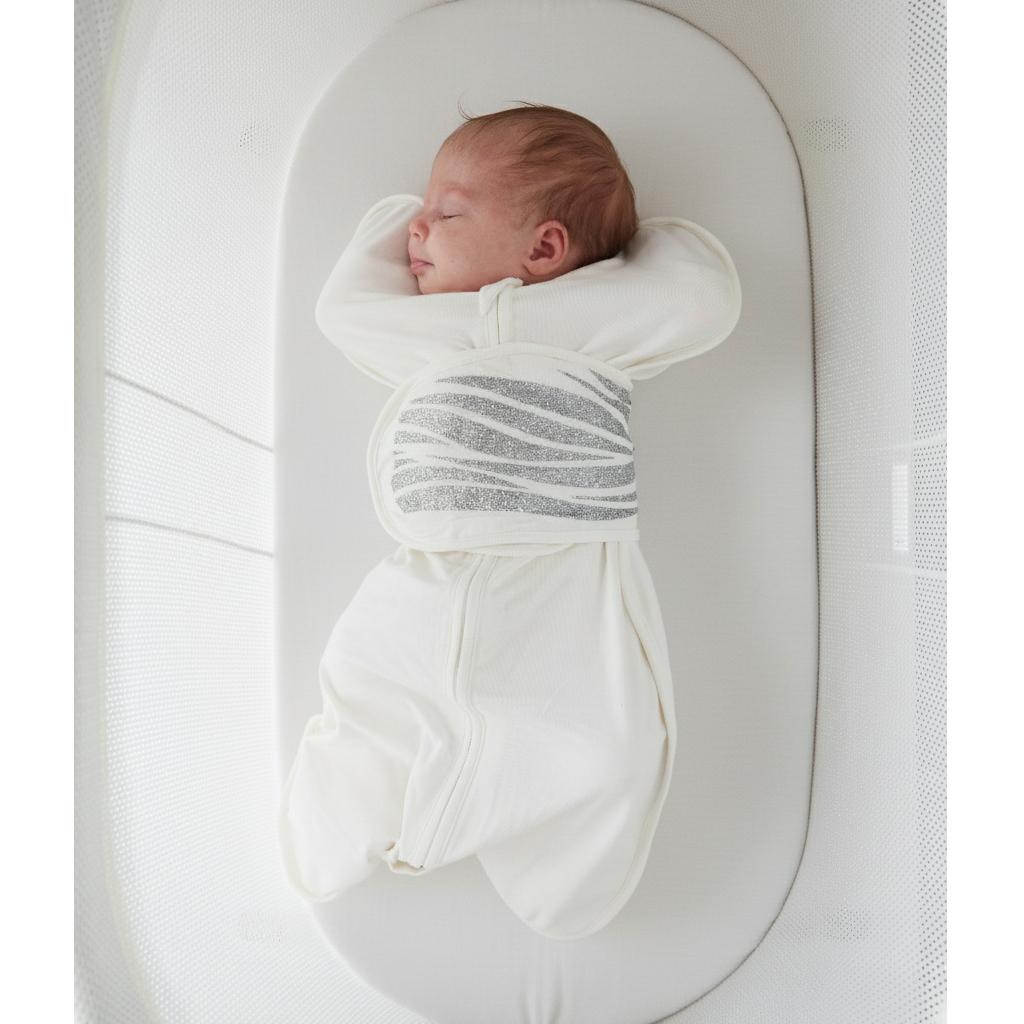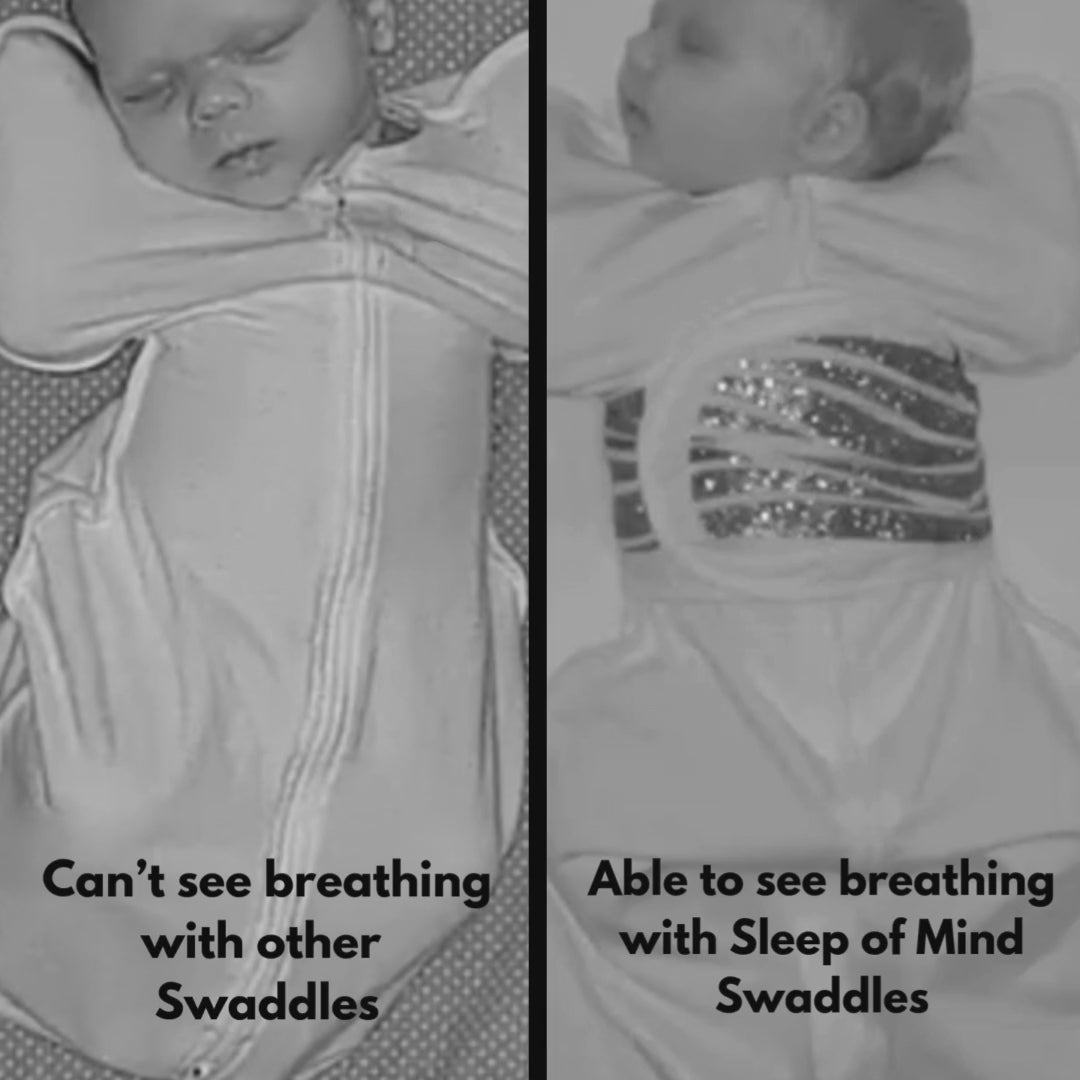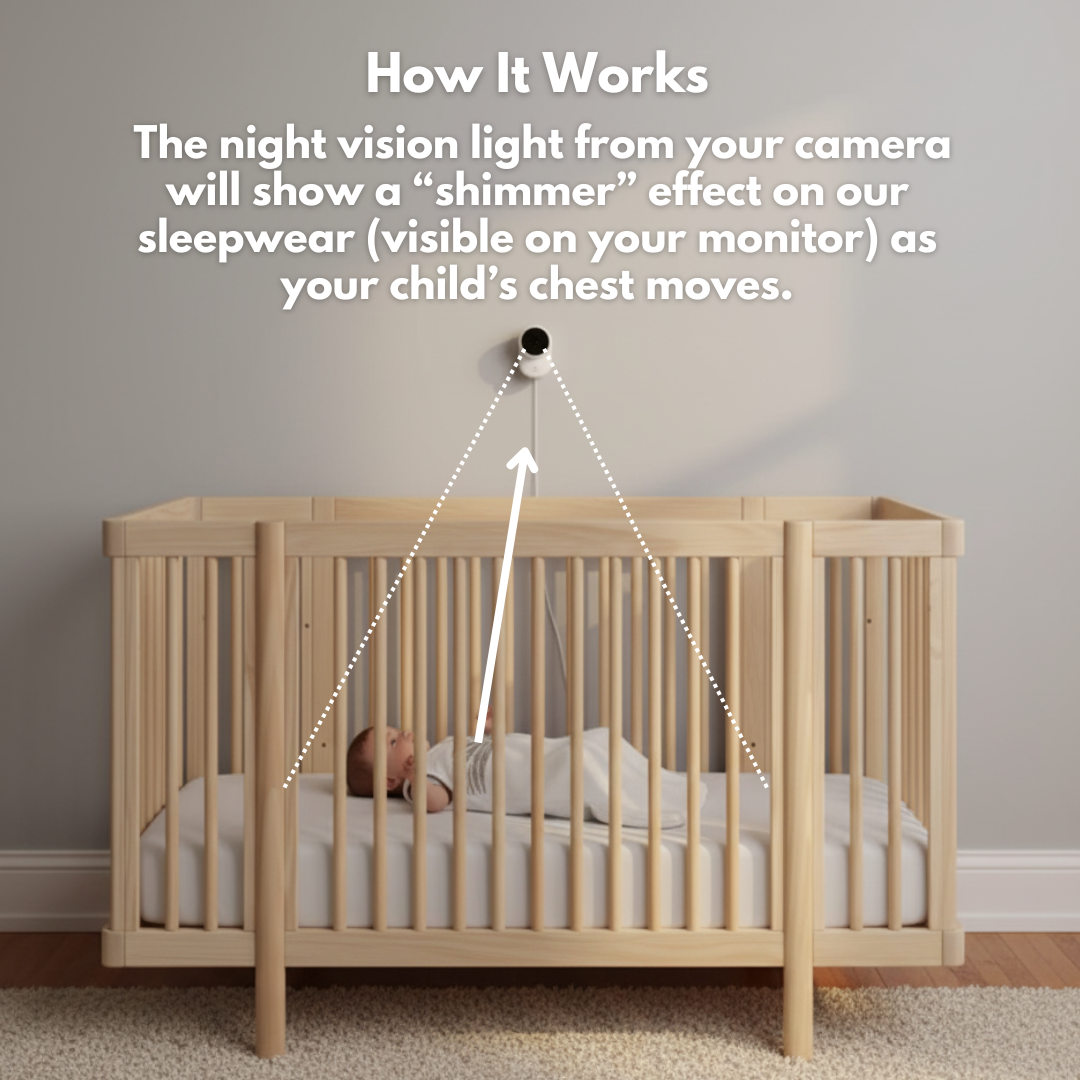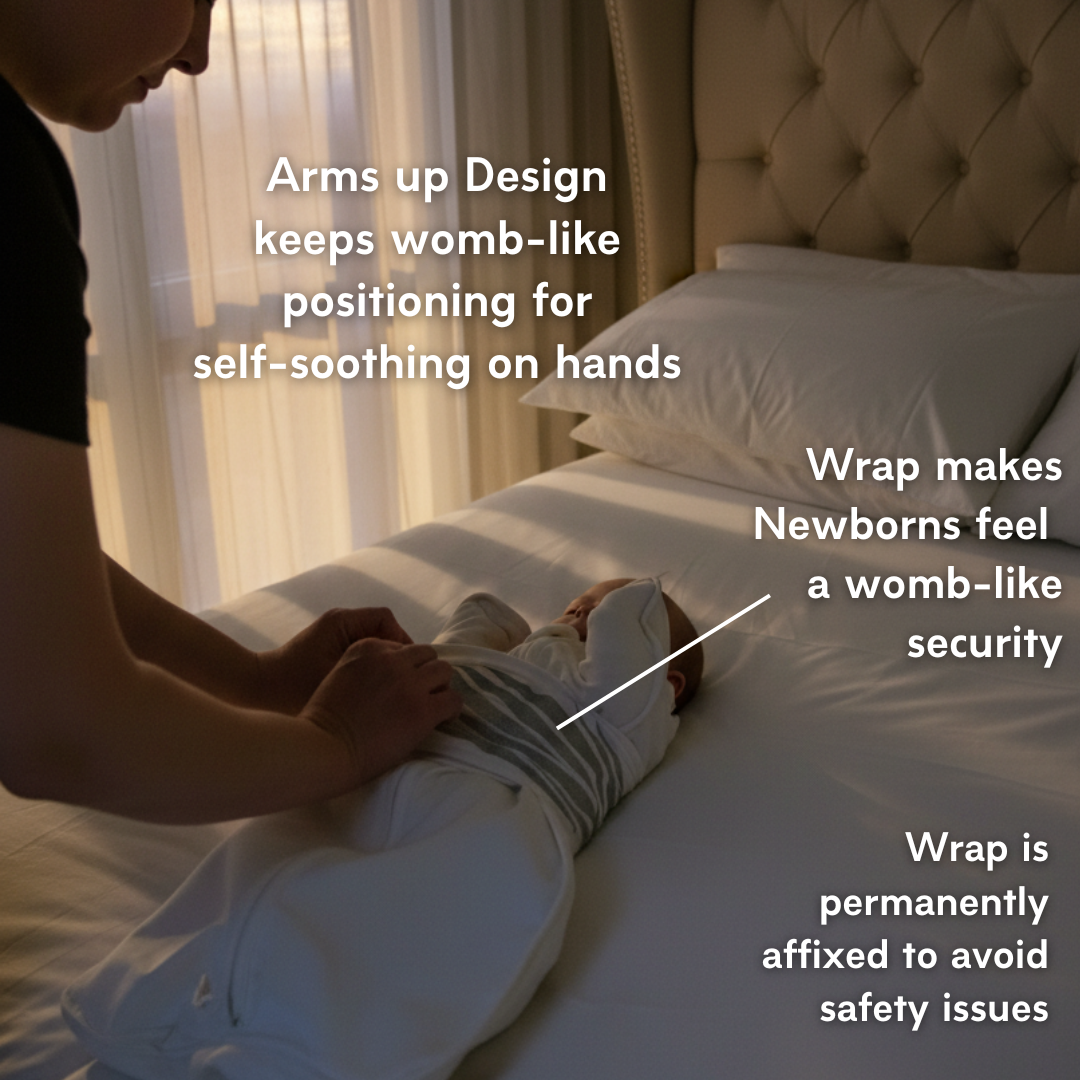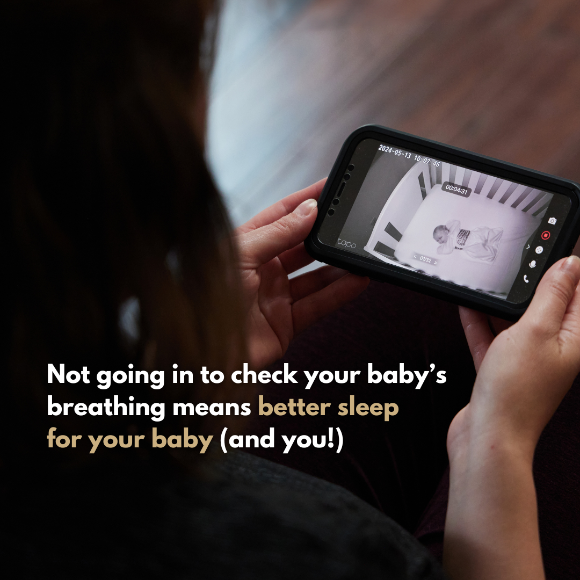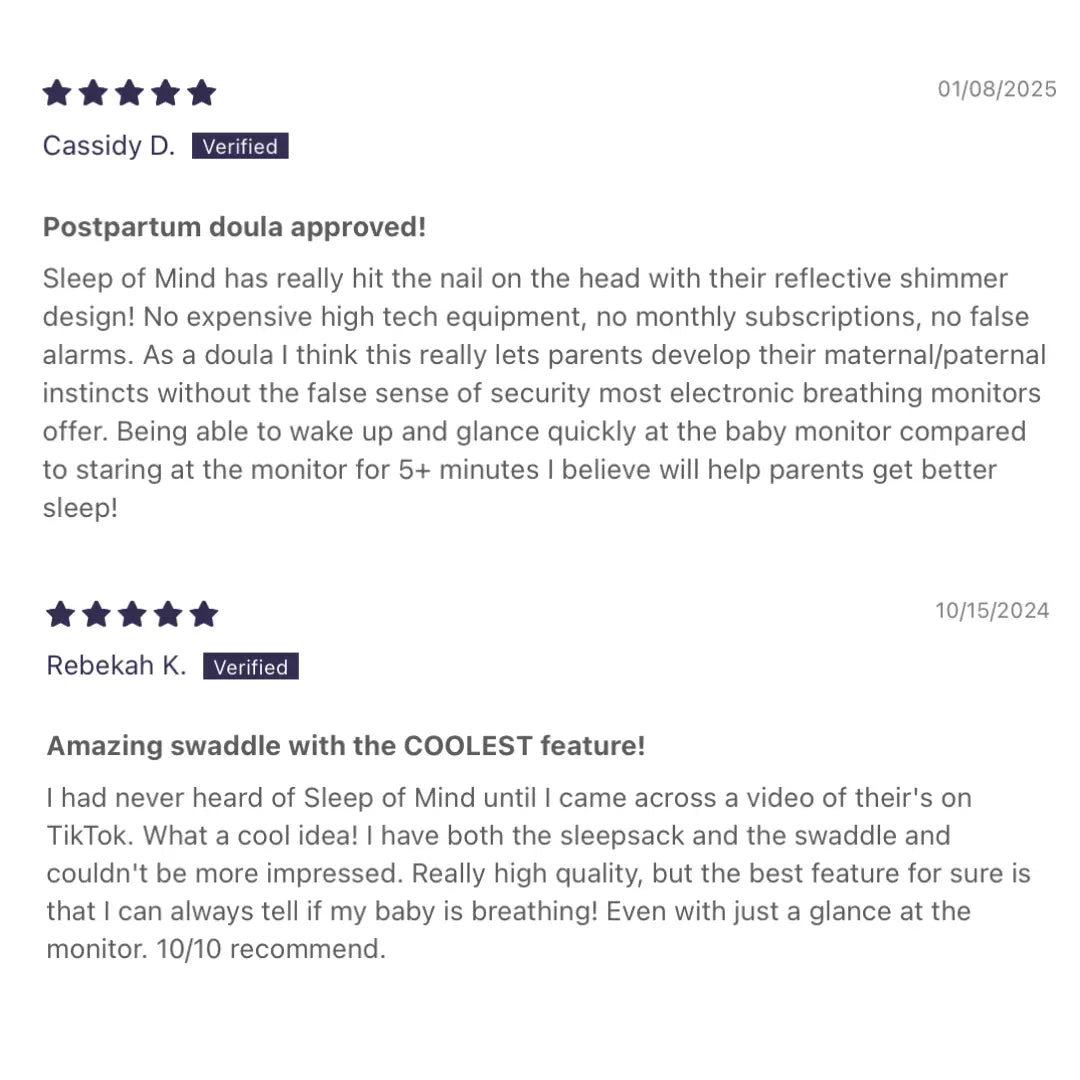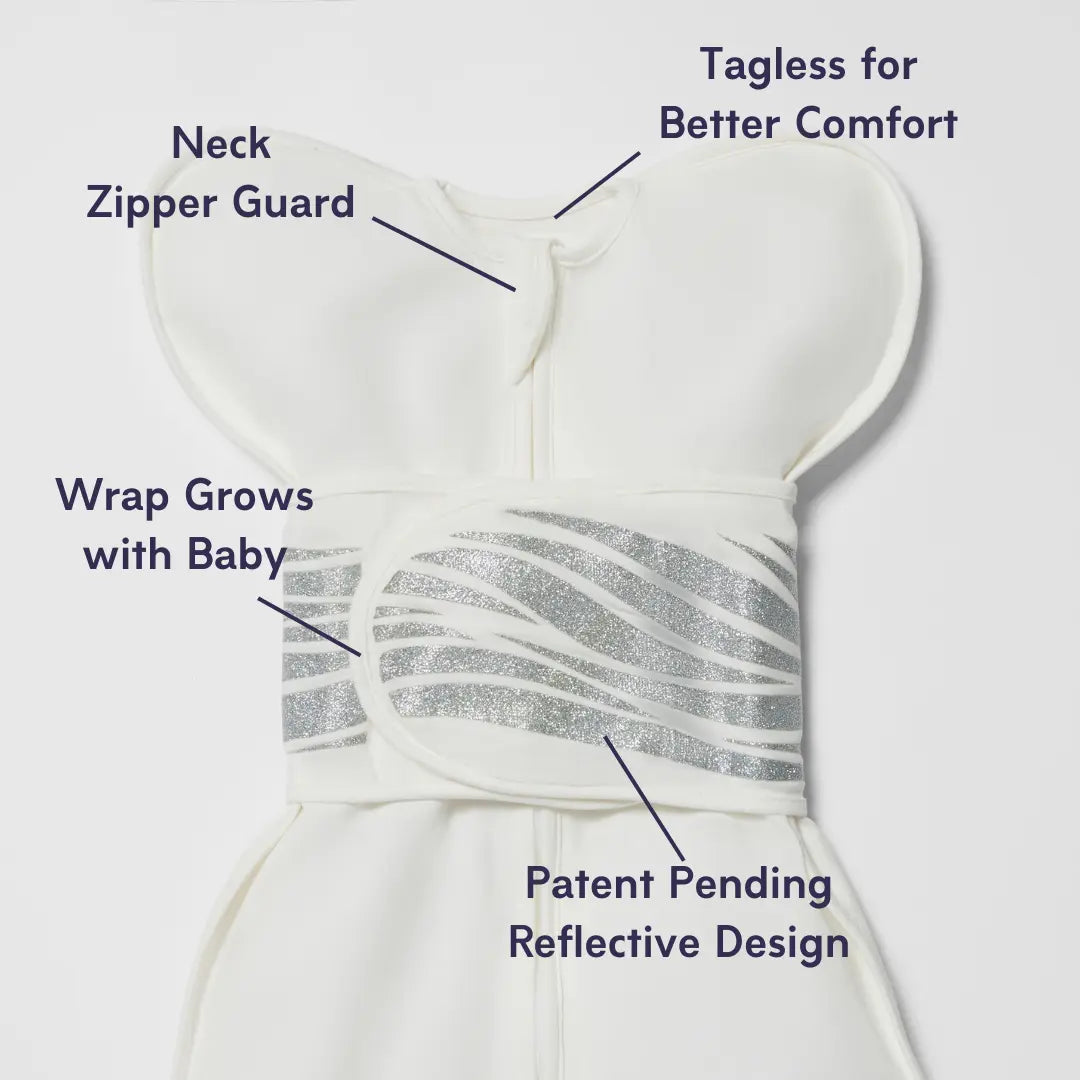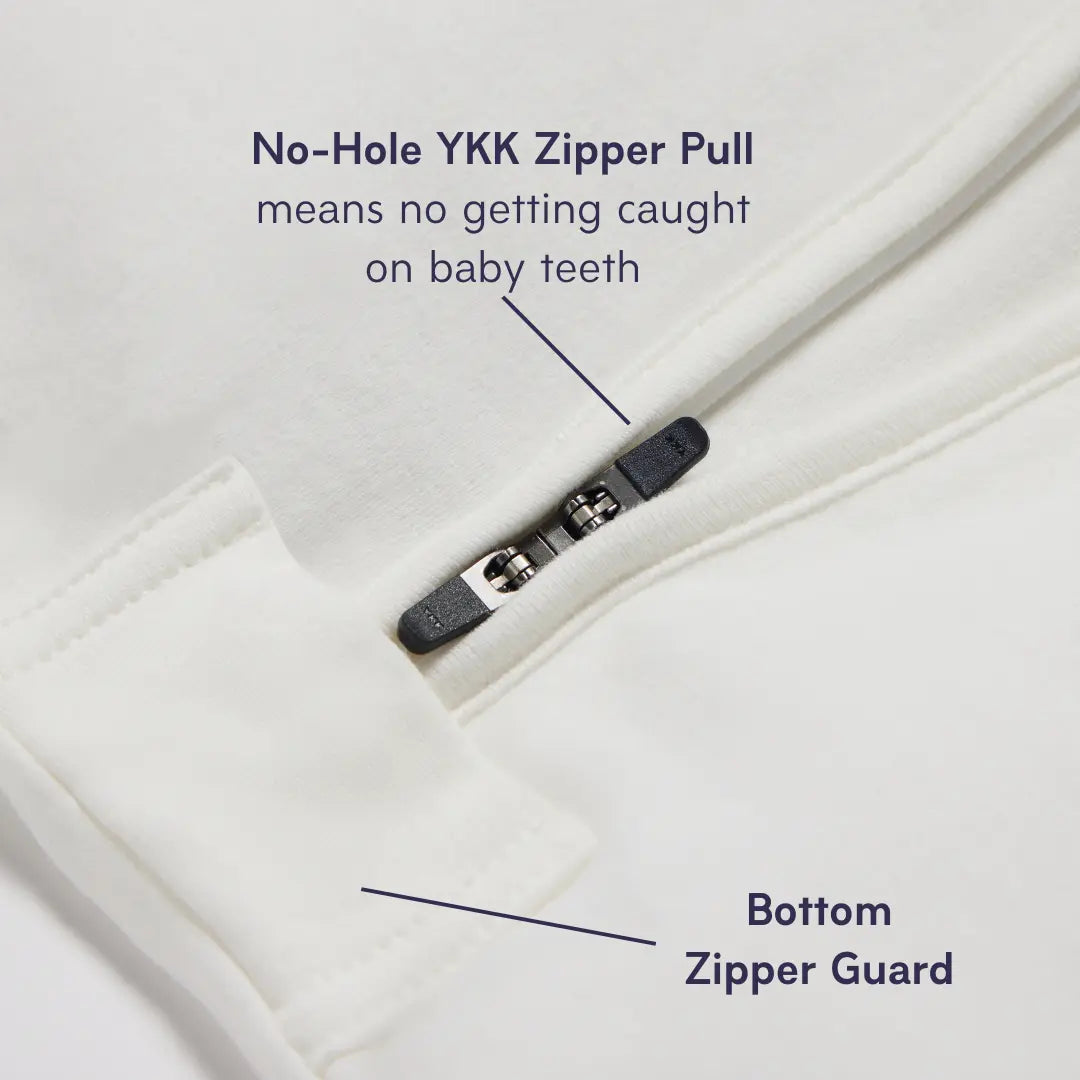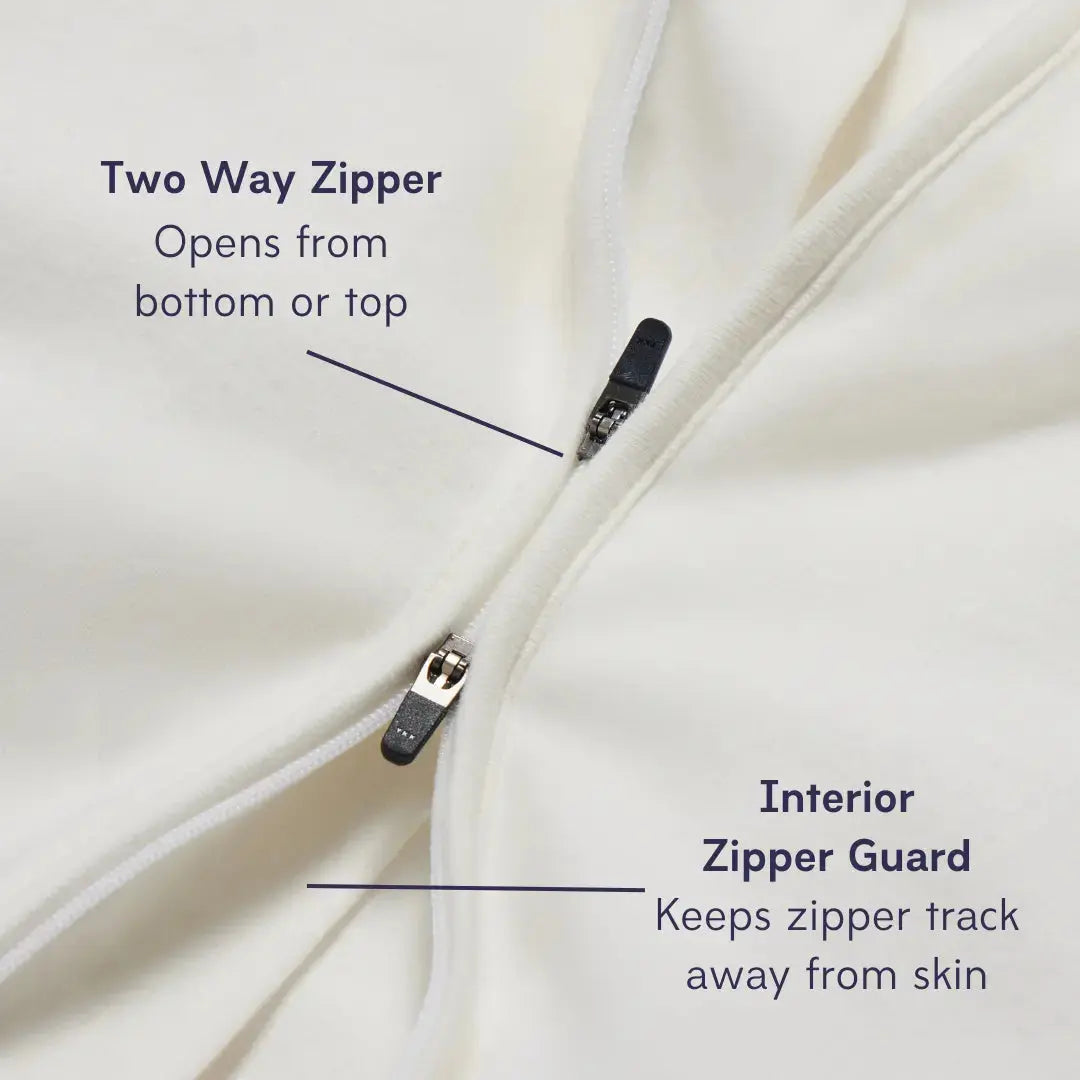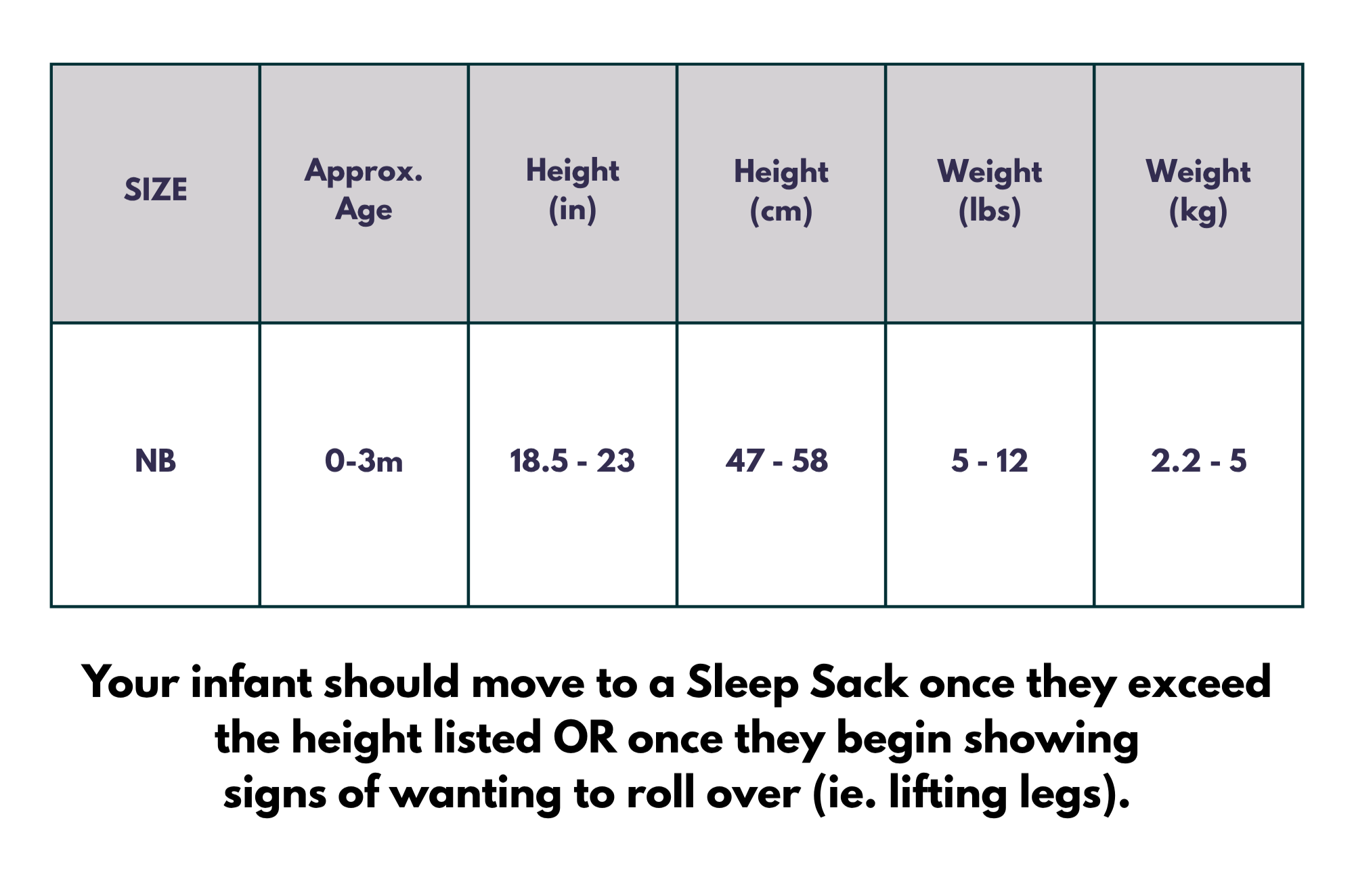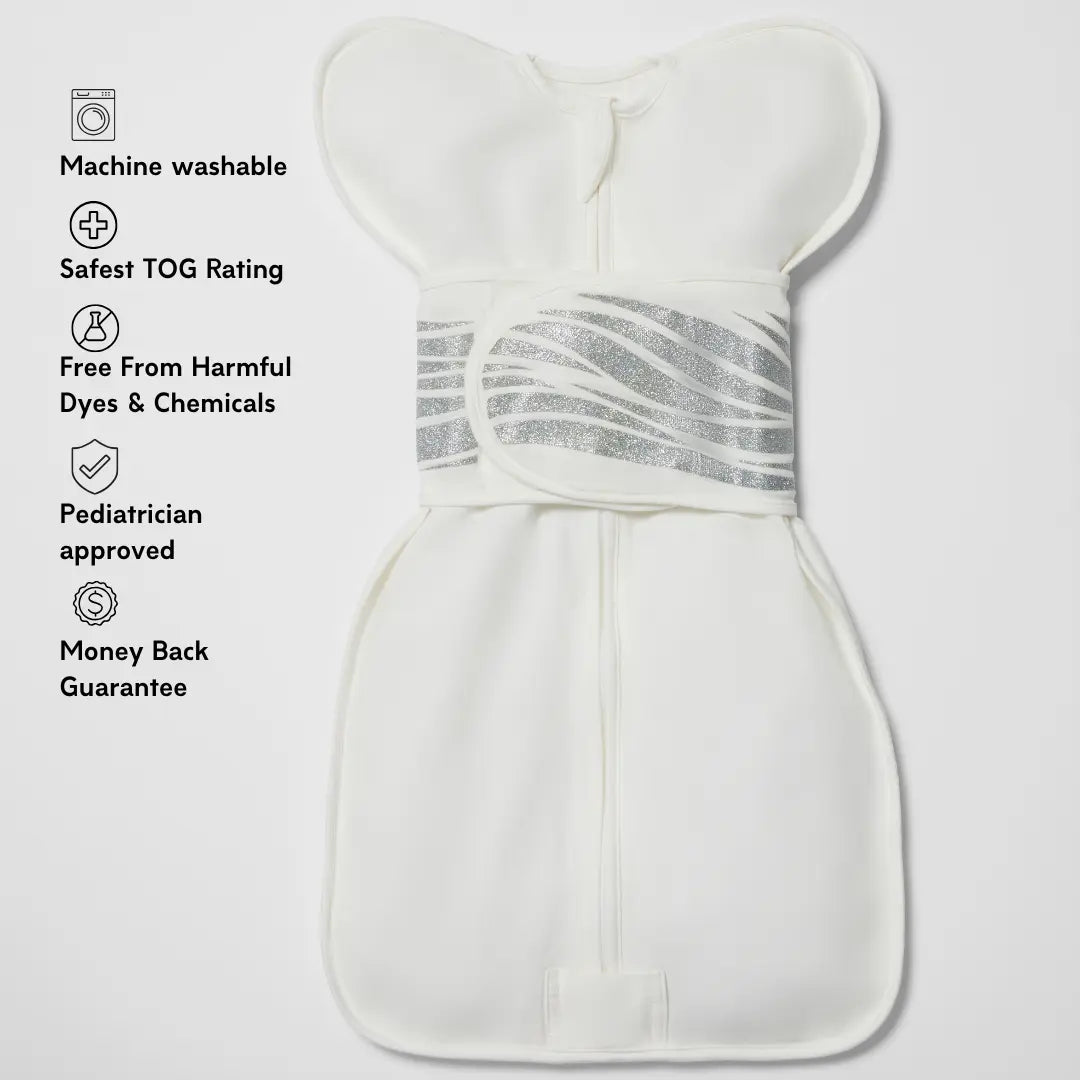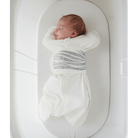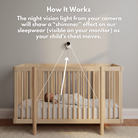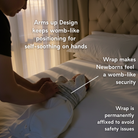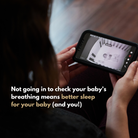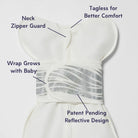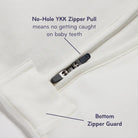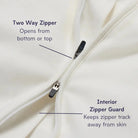There is a reason why "how to get newborn to sleep in bassinet" is such a popular search query. Getting a newborn to sleep in a bassinet can be tough for many new parents. Some newborns can sleep anywhere, but others resist sleeping in a new place, preferring the comfort of being held. But helping your baby get used to the bassinet is important for their safety when sleeping and your rest. If you’re struggling with getting baby to sleep in the bassinet then I have all the best tips for you.
In this article, I’ll share our tried and true advice to make this transition smoother, from setting up a calming bedtime routine to using a baby swaddle to make the bassinet cozy. With these simple steps, you’ll help your baby sleep better and give yourself a well-deserved break. Read on to know more.
Why Your Newborn "Hates" The Bassinet

Some newborns will sleep easily in a bassinet and some won’t, but I can assure you, this is not something you caused. It is rooted in an ancient survival instinct. Historically, being away from a care giver meant danger, and this instinct still triggers many infants to cry when they are put down, especially in a space that doesn’t resemble the womb or a parent’s arms.
The Importance of Using a Bassinet
Despite these struggles, using a bassinet is crucial for your baby’s safety. Sudden Infant Death Syndrome (SIDS) is a serious concern, and a firm, flat, empty bassinet helps reduce this risk. The American Academy of Pediatrics advises against bed-sharing and promotes guidelines to ensure safe sleep environments, warning against soft or inclined surfaces which have been linked to infant deaths.
Caution with Online Advice
The internet offers countless tips for helping your baby sleep, but caution is needed with some suggestions. For instance, using heating pads or positioners can pose risks, requiring constant supervision that's often impractical for tired new parents. Always remember, anything besides a fitted sheet and your baby in the bassinet can jeopardize safety and should be avoided for sleep. Instead, prioritize safe and practical solutions.
First Step is to Create the Optimal Sleep Environment
We want to take certain cues from the womb, as a newborn will feel most safe and secure in that type of environment. How to create an ideal sleep environment:

Darkness
The womb was dark so it’s best to keep the sleep environment completely dark. If you need light for feedings, use a red or amber night light to avoid disrupting sleep. When it’s time to be awake, then have your baby near a window to see daylight in order to help set their Circadian Rhythm and avoid day/night confusion.
Brown Noise

The womb was also very noisy so use a continuous white noise machine to block out disruptive sounds. Opt for natural, non-looping brown noise, like the noise generated from Sound of Sleep devices, aiming for a maximum of 60 decibels.
Cool Temperature
Lower temperatures help cue sleep and activate melatonin in the body. Newborns also can’t regulate their temperature very well so they can be prone to overheating easily. Maintain a room temperature of 20-21°C / 68-70°F. Also avoid overdressing your baby to prevent overheating, a risk factor for SIDS. A diaper and baby swaddle are ideal.
Baby Swaddles
Once you can recognize when your baby is ready for sleep and spot their sleepy signs, the next key element to support their sleep finding the right type of swaddle. It's like giving them a warm hug that reminds them of being cozy in the mother's womb and prevents them from getting startled awake by reflexes. There are different types of baby swaddles available, including traditional blankets, wraps with Velcro, and swaddle sacks with zippers, etc.
1. Traditional Swaddle Blankets
Traditional swaddle blankets are versatile, often large squares of fabric that can be wrapped around your baby in various ways, providing flexibility. However, mastering the swaddling technique with these blankets can be difficult for new parents. It requires practice to ensure the swaddle is snug enough to prevent the baby from breaking free but not too tight to restrict movement or cause discomfort. Also, they only offer arms-down swaddling which your baby may not like.
2. Swaddle Wraps
Swaddle wraps are designed for ease of use, with Velcro or snap closures that simplify the swaddling process. They are designed with wings to make it quick and easy to securely wrap your baby. The built-in closures ensure a consistent fit every time, reducing the risk of the swaddle coming undone. These swaddles also only come in an arms-down format.
3. Swaddle Sacks
Featuring zipper closures, swaddle sacks are easy to use. You simply place your baby inside the sack and zip it up, making the swaddling process fast and straightforward. The zipper closure ensures that the swaddle stays in place, providing a secure and consistent swaddle that won’t come undone during sleep. Some swaddle sacks are arms down, typically using arm locks inside the sack, and some are arms up, allowing for self-soothing and sleeping in an arms-up position.
The Ideal Swaddle for Most Babies: Sleep of Mind Baby Swaddle

Our Sleep of Mind baby swaddle is crafted with an arms-up design, mirroring an infant’s natural positioning in the womb. This approach offers numerous advantages. By allowing babies to access their hands, it enables them to self-soothe and drift off to

sleep more easily. Mimicking the comfort and security of the womb, the stretch of our snug swaddle also calms the startle reflex so a baby doesn’t startle themselves awake. This leads to longer stretches of sleep. Additionally, the arms-up position is a natural position that most babies want to sleep in. They instinctively feel safer this way because it reduces the likelihood of rolling onto their stomachs, thus promoting a safer sleep environment for newborns.
The best feature though is our reflective design that let’s parents see their newborn’s breathing via their own baby monitor. No batteries, wires, apps or subscription fees.
It uses the IR light being emitted from a baby monitor and reflects according to your baby's chest movement. When you have more peace of mind about your baby’s wellbeing, both you and baby will sleep better. Order yours here.
Can Baby Swaddles Actually Help with Newborn Sleep?
Yes, baby swaddles can significantly improve newborn sleep by providing a cozy, womb-like environment that makes babies feel secure. Swaddling helps to:
- Reduce Startle Reflex: By keeping the baby’s arms snugly wrapped, a baby swaddle can prevent the Moro reflex (startle reflex) from waking them.
- Promote Longer Sleep: The comfort and security provided by swaddling can lead to longer, more restful sleep periods for both baby and parents.
- Ease the Womb-to-World Transition: Swaddling mimics the snugness of the womb, helping babies adjust to the new environment outside.
How You Place Your Baby in the Bassinet Matters!
Using a baby swaddle can help your newborn feel more secure, but how you place your baby in the bassinet also makes a big difference. Just placing them down on their back may cause them to feel like they are falling backwards, which can startle them awake. Here’s how to avoid that:
- Feet First: Lower your baby’s feet gently into the bassinet first. This method helps avoid the sudden feeling of falling that can trigger the Moro reflex and wake them up.
- On Their Side: Turn your baby to their side before placing into the bassinet. After gently laying them down on their side, slowly and gently roll them onto their back, as the back is the safest sleep position.
- Keep Hands on Your Baby: After placing your baby down, keep your hands on their chest or arms for a few moments. This can help soothe them and make the transition smoother.
Tips for How to Get Your Newborn to Sleep in a Bassinet
Observing and responding to your baby's sleep cues is essential for ensuring they get the rest they need without becoming overtired. Understanding these cues and their wake windows can help you create a more effective sleep routine.
1. Recognize Wake Windows
Newborns have very short periods during which they can comfortably stay awake, usually between 45 to 60 minutes for babies 0-8 weeks old. This timeframe is known as a wake window. During this time, your baby should be fed, changed, and engaged in activities like tummy time. As soon as this period ends, it's crucial to start preparing them for sleep before they become overtired. Once a baby is overtired, it can be very difficult to get them to sleep.
2. Early Signs of Tiredness
Identifying early signs of tiredness can help you avoid putting your baby down when they're overtired. These early signs include:
- Zoning Out: Your baby may seem less engaged, staring into space or becoming less responsive.
- Pulling at Ears: Some babies tug at their ears when they're tired.
- Rubbing Eyes: Rubbing eyes or face is a common sign of sleepiness.
If early signs are missed, your baby may show more pronounced signals:
- Yawning: Frequent yawning is a clear indicator that your baby is ready for sleep.
- Turning Away from Stimulation: If your baby starts to turn their head away from lights, sounds, or faces, they are likely becoming overstimulated and tired.
- Crying and Fussing: These are late signs of tiredness. At this point, your baby might become more difficult to soothe.
The Impact of Overtiredness
Allowing your baby to become overtired can make it much harder for them to fall asleep and stay asleep. When overtired, a baby's body releases cortisol, a stress hormone that can make them more alert and restless. This makes it more difficult for them to settle down and can lead to increased crying and resistance to sleep.
Pro-Tip: Combine Wake Windows and Sleep Cues
To optimize your baby's sleep, use a combination of watching the clock and observing sleep cues:
- Set a Timer: As soon as your baby wakes up, set a timer for their wake window. This helps ensure you are mindful of the limited time they can stay awake.
- Observe and Act: Watch for early sleepy signs within the wake window. If you notice these cues, start your sleep routine immediately.
- Consistency: Try to put your baby down for a nap or bedtime before they reach the late tiredness stage. This helps them fall asleep more easily and reduces fussiness.
By carefully monitoring your baby's wake windows and sleep cues, you can create a more predictable and calm sleep routine, reducing the stress and frustration associated with trying to put an overtired baby to sleep.
How You Place Your Baby in the Bassinet Matters!
Using a baby swaddle can help your newborn feel more secure, but how you place your baby in the bassinet also makes a big difference. Just placing them down on their back may cause them to feel like they are falling backwards, which can startle them awake. Here’s how to avoid that:
- Feet First: Lower your baby’s feet gently into the bassinet first. This method helps avoid the sudden feeling of falling that can trigger the Moro reflex and wake them up.
- On Their Side: Turn your baby to their side before placing into the bassinet. After gently laying them down on their side, slowly and gently roll them onto their back, as the back is the safest sleep position.
- Keep Hands on Your Baby: After placing your baby down, keep your hands on their chest or arms for a few moments. This can help soothe them and make the transition smoother.
Alternatives When the Bassinet Isn’t Working
If your little one is still resisting sleep in the bassinet, try again later and opt for other safe options:
-
Babywearing: Keep your baby
 close and cozy while you tackle your daily tasks or go on a walk by using a carrier or wrap. Trust me, it's a game-changer.
close and cozy while you tackle your daily tasks or go on a walk by using a carrier or wrap. Trust me, it's a game-changer.
- Stroller Adventures: Opt for a stroller equipped with a bassinet attachment for nap times, ensuring your baby rests comfortably on a flat, secure surface.
- Singing: Music helps the brain transition from the sympathetic nervous system to the parasympathetic nervous system, which is in charge of sleep. Try bouncing on a yoga ball while holding your baby and singing a lullaby.
- Motion Bassinets: These smart bassinets offer a soothing environment for your baby. They work wonders, especially when used from birth.
Ask for help as much as possible. It can be very draining when a newborn won’t sleep so please look after yourself and have someone else try to help your baby to sleep while you get some much needed rest. A happy parent equals a happy baby.
Final Words
Newborns grow and change rapidly, so keep trying different strategies. At around 16 weeks post expected due date, many babies are ready to start developing independent sleep skills. This is an ideal time to help your baby learn to sleep on their own, setting the stage for better sleep through all future developmental milestones



